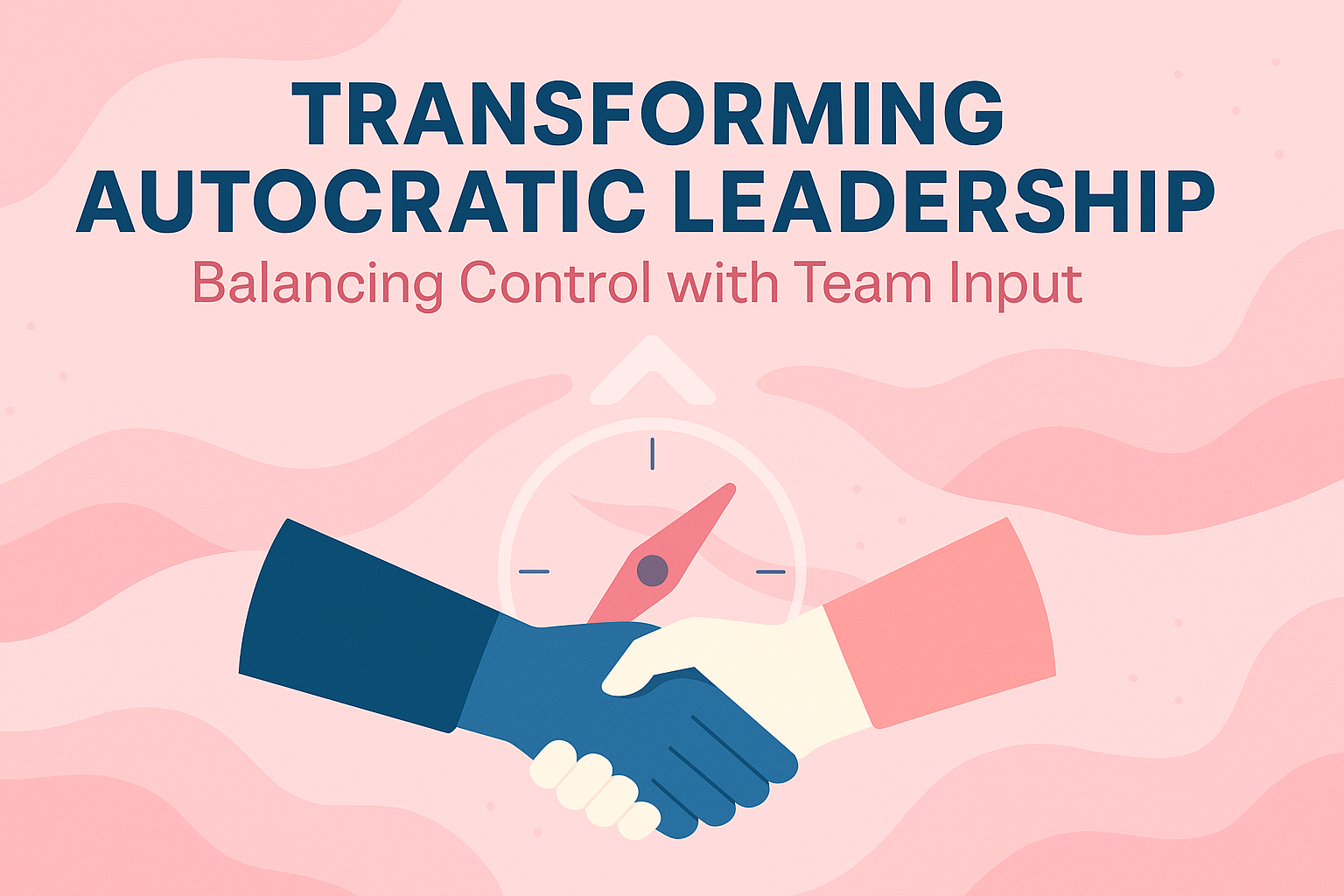Difficult conversations at work often feel like looming thunderstorms.
You can see them rolling in, you sense the tension in the air, and you know you can’t just run away. In your role as a manager, it’s essential to face these tough moments with clarity, empathy, and confidence.
The good news is that when done well, these conversations become a powerful way to strengthen relationships and lay the foundations for genuine trust.

Why Difficult Conversations Are Worth Having
It’s tempting to shy away from situations that feel tense, hoping they’ll work themselves out. Yet unspoken issues don’t vanish; they just build up behind the scenes.
Difficult conversations actually serve a critical purpose: they clear the air, resolve misunderstandings, and help people feel heard.
By addressing problems sooner rather than later, you strengthen your team’s overall health and show your commitment to transparency.
This approach is especially important when you’re aiming to build or maintain trust.
Too many managers let small cracks widen into major rifts, simply because it seems easier to put off difficult conversations.
But ignoring issues can create an atmosphere of uncertainty, which undermines morale and long-term stability. By tackling sensitive topics right away, you set an example of accountability that others will follow.
Creating Psychological Safety Before Addressing Problems
Getting good at tough conversations starts with setting the stage.
This means creating an environment where people feel safe speaking up—even when what they have to say is uncomfortable.
Psychological safety allows team members to share thoughts, feelings, and ideas without worrying about negative repercussions. You can begin fostering this atmosphere by:
- Encouraging Open Dialogue: Ask for input and show genuine interest in your team’s perspectives.
- Listening Actively: Paraphrase what people say, ask follow-up questions, and avoid jumping to conclusions.
- Normalizing Feedback: Make routine feedback part of your team culture so that it doesn’t feel jarring or punitive.
- Modeling Vulnerability: Acknowledge your own mistakes or uncertainties to show that it’s safe to be honest.
When your team sees that you approach challenging issues with fairness, empathy, and a willingness to learn, they’re far more likely to trust you.
Establishing psychological safety is the first step toward ensuring difficult conversations turn into growth opportunities, rather than breeding resentment.

Scripted Starters for Tough Conversations
You don’t need to memorize entire scripts to handle difficult conversations successfully, but it can help to have some concrete examples on hand.
Below are sample openers and key phrases designed to set the right tone, whether you’re addressing underperformance, missed deadlines, or problematic behavior. Feel free to adapt these for your particular style or situation.
Addressing Underperformance
When it’s time to talk about slipping performance:
- “I’ve noticed some changes in your performance lately, and I’d like to understand what might be causing that. Could you share how you’re feeling about your current workload and responsibilities?”
- “The recent metrics indicate you’ve been struggling to meet expectations. Let’s explore what support or resources might help you get back on track.”
- “I want you to succeed in your role, and I’m here to help. Can we talk about any challenges you’ve been facing that might be impacting your work?”
Keep your language open and non-accusatory. This helps the person you’re talking to feel that the conversation is collaborative rather than confrontational.
Underperformance can have numerous causes—from personal stress to skill gaps—so your goal is to discover those root issues and find productive solutions.
Addressing Missed Deadlines
When timeframes are slipping and you need to figure out why:
- “I see the deadline for Project X wasn’t met. I’d like to discuss what happened and how we can prevent similar delays in the future.”
- “Can you walk me through the barriers you encountered? Let’s explore how we can adjust timelines or resources going forward.”
- “I know deadlines can be stressful. Let’s see if there’s a way we can streamline the process or get the team more aligned.”
When deadlines slip, frustration can run high. Rather than pointing fingers, adopt a problem-solving stance.
Investigate together where the gaps occurred—poor communication, unrealistic targets, or unexpected obstacles—and plan for a smoother outcome next time.
Addressing Behavioral Issues
When someone’s behavior is affecting the team dynamic:
- “I’m concerned about some recent interactions I’ve observed. Let’s talk about what might be causing tension and how we can resolve it.”
- “I’ve heard feedback from team members that your tone in meetings feels dismissive. I value your contributions, and I want to make sure your insights are received in the best possible way.”
- “Building a supportive environment is crucial to us. Can you share your perspective on what’s happening so we can work on a solution together?”
Approach behavioral issues head-on but with sensitivity.
Emphasize how important it is for everyone to be comfortable and respected in the workplace. By focusing on observable actions or remarks rather than personality traits, you reduce defensiveness and maintain a fair approach.

Navigating Emotional Responses
Difficult conversations can spark emotional reactions.
It’s natural for people to feel upset, defensive, or even embarrassed when receiving feedback. Your role is to stay calm, offer empathy, and steer the conversation back to constructive ground. Consider these strategies:
- Pause and Acknowledge: If you sense strong emotions, take a moment to recognize them. For example, say, “I can see this topic is upsetting. Let’s take a moment and come back to this when you’re ready.”
- Use Empathetic Language: Phrases like “I understand this is challenging” or “I appreciate you sharing how you feel” go a long way in diffusing tension.
- Refocus on Goals: Remind the person about the shared objectives. “We both want to find a solution that supports you and the team. Let’s explore how we can achieve that.”
You build trust by showing that you see the person’s emotions as valid. Rather than brushing them aside, you let them know you’re open to hearing what they need to say.
That validation often defuses conflict and paves the way for a more constructive exchange.
Maintaining Trust with Follow-Through
If you promise support, resources, or follow-up steps during a difficult conversation, be sure to follow through.
Consistency is key to building trust. When you meet again, start by reviewing the action items from your last discussion.
Did you both complete your tasks? Are new obstacles coming to light? A simple check-in shows your team member that you meant what you said.
In some cases, you may need to escalate an issue or bring in additional help. For example, if performance issues persist despite multiple interventions, you might involve human resources.
Even in these scenarios, keep your commitment to open dialogue. Let the individual know the next steps, timelines, and any potential consequences for unresolved issues.
Transparency reduces the anxiety that often accompanies formal procedures.

Leveraging Tools and Structures
Beyond interpersonal strategies, consider the practical tools that can help you manage tasks, track performance, and keep team communication running smoothly.
Software like Teamly can streamline workflow visibility, ensuring you have the data you need to facilitate these conversations. With clear metrics and timelines at your fingertips, it becomes easier to address potential issues before they escalate.
Structured processes—like regular one-on-ones, retrospective meetings, and performance check-ins—also create consistent opportunities for feedback.
When you embed feedback into your team’s day-to-day routine, “difficult” conversations can feel more natural and less punitive.
Regular touchpoints increase trust because they show you’re committed to ongoing dialogue rather than waiting for major problems to arise.
Preparing Yourself Mentally
Managers often overlook their own mental preparation. Before having any difficult conversation, reflect on your mindset.
Are you genuinely looking to help the other person improve, or are you annoyed and ready to vent?
A negative or accusatory mindset will come through, even if you try to hide it. Take a moment to remind yourself of the goal: to maintain a healthy, productive environment where everyone can thrive.
- Practice Self-Awareness: Ask yourself how you’re feeling. If you’re upset, give yourself time to cool down and think clearly.
- Plan Key Points: Jot down the main issues you want to address. Having a brief outline can prevent the conversation from drifting into unrelated areas.
- Visualize a Positive Outcome: Picture the best possible resolution. This helps you steer the discussion in a constructive direction.
By grounding yourself, you show up with a calm, respectful demeanor that makes it easier for the other party to share their side of the story. This step is especially crucial in high-stakes situations or when emotions run hot.

Turning Conversations into Growth Opportunities
Ultimately, the toughest discussions can become catalysts for development—not just for the person receiving feedback but for you as a manager.
Each conversation offers a chance to hone your communication skills, deepen team relationships, and foster an environment of continuous improvement. Remember to:
- Check for Understanding: At the end of each conversation, ask, “Is there anything that seems unclear or unresolved?” This ensures both parties feel aligned.
- Encourage Reflection: Suggest that your team member take some time to think about their own goals and challenges. Offer follow-up meetings to continue the dialogue.
- Celebrate Small Wins: Even if a conversation is uncomfortable, acknowledge any positive changes that come from it. Celebrating steps in the right direction reinforces growth mindsets.
As you develop this skill, you’ll notice a shift in your team’s culture. Openness becomes the norm, and trust feels like a natural byproduct.
Problems are handled proactively, misunderstandings are clarified swiftly, and team members respect each other for addressing issues head-on. The result? A team that’s resilient, more unified, and eager to tackle challenges together.
Conclusion
Difficult conversations are inevitable, but they don’t have to be dreaded moments of high-stakes drama.
By focusing on psychological safety, using clear communication scripts, and following through on your commitments, you can transform these encounters into opportunities for genuine connection and growth.
Through a steady approach and consistent follow-up, you’ll foster an environment where trust isn’t just a buzzword—it’s the cornerstone of how your team operates.
You hold the power to make each conversation count.
By tackling tough topics directly and empathetically, you strengthen your role as a leader and pave the way for a healthier, more collaborative workplace.
So the next time you feel that knot in your stomach before a challenging meeting, remember: this is your chance to solidify trust, encourage growth, and bring your team closer together.























































